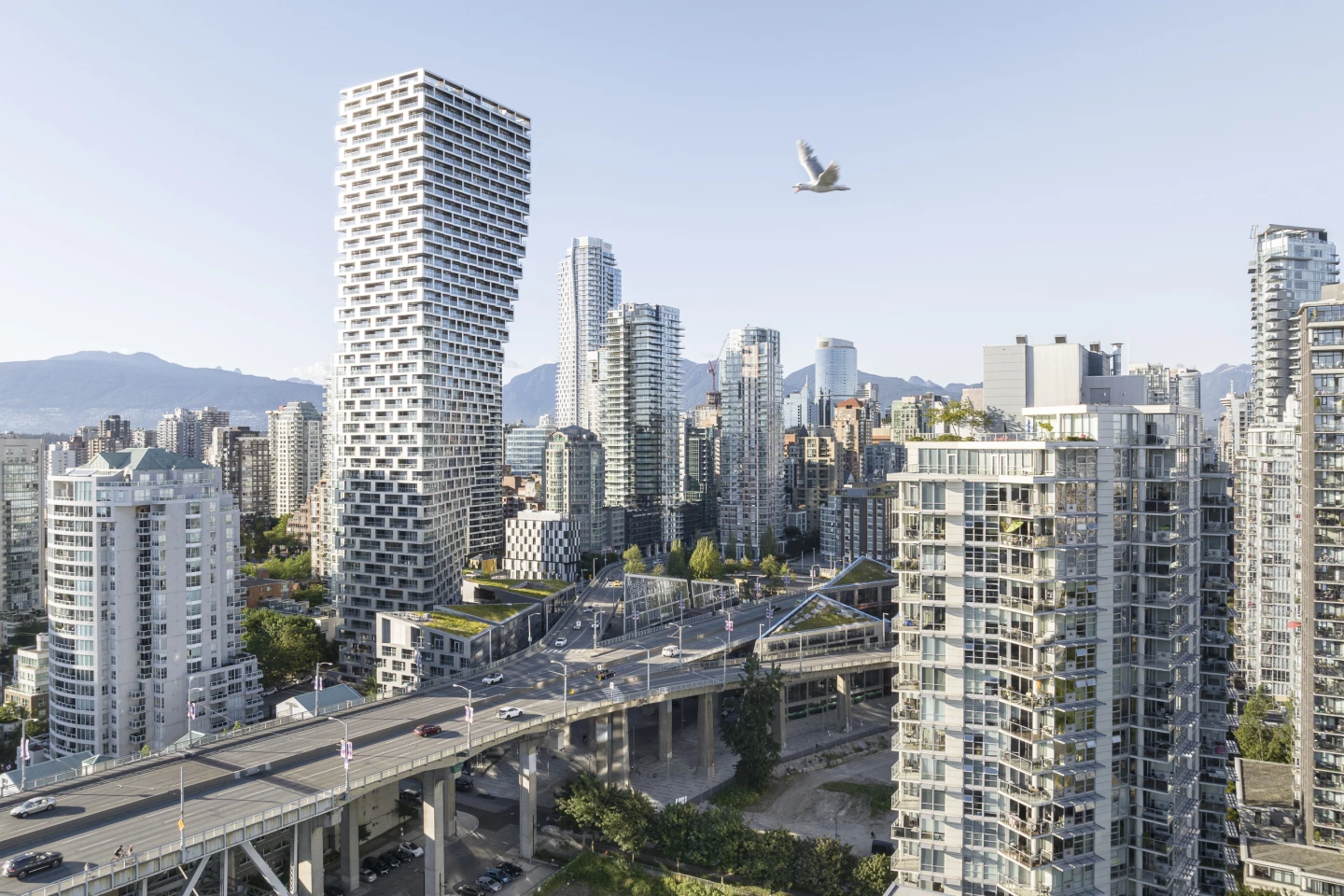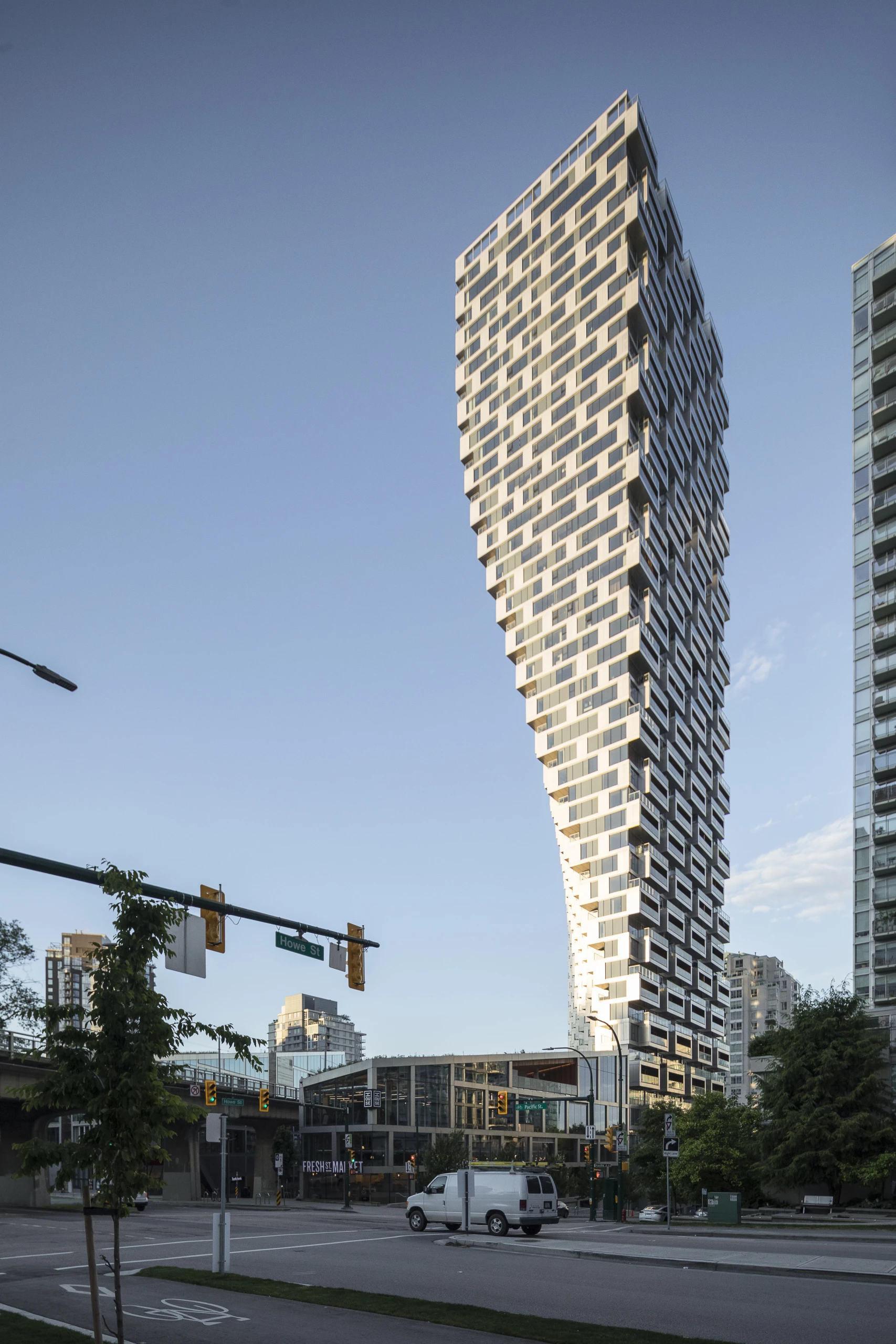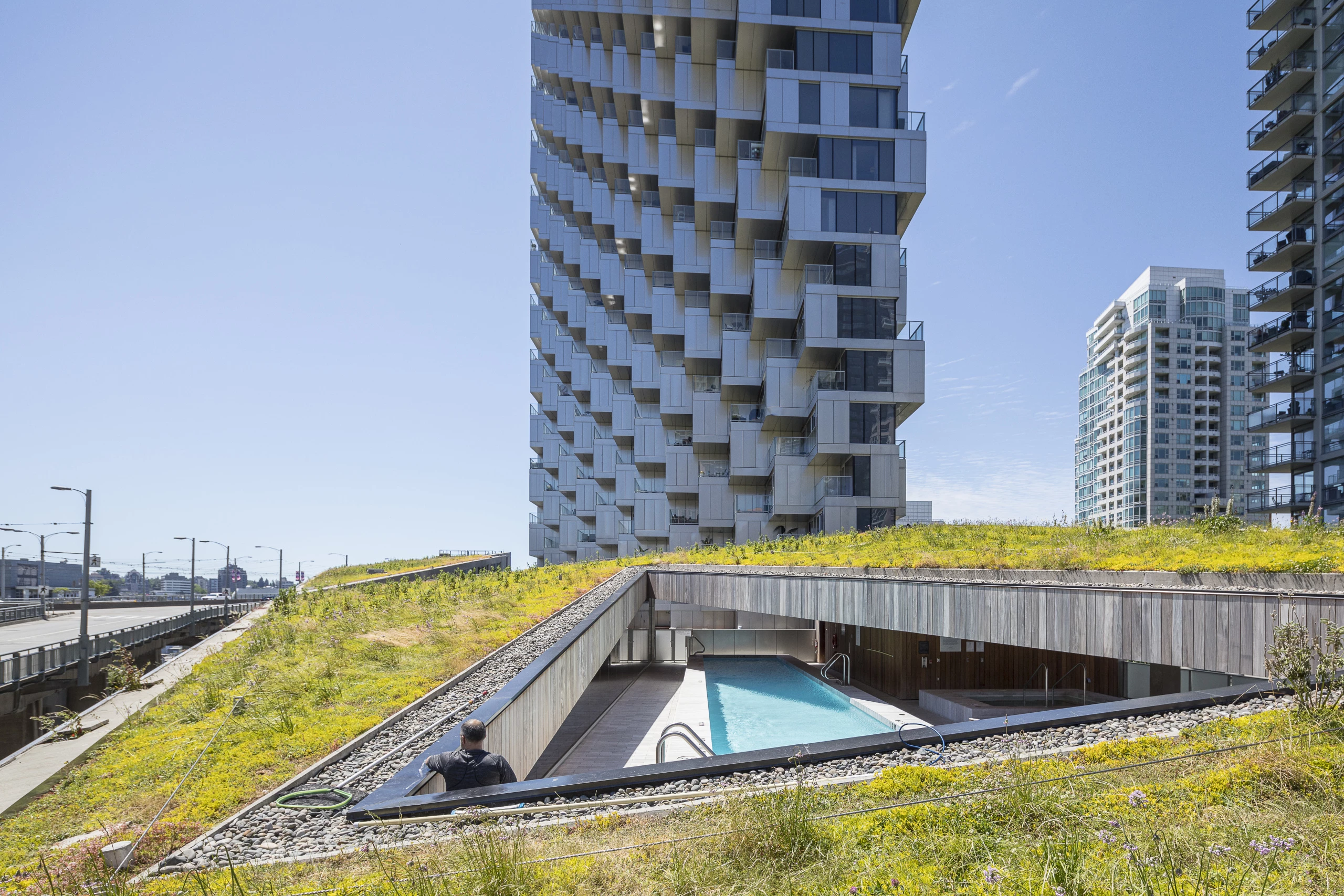In a classic example of necessity being the mother of invention comes the extraordinary Vancouver House skyscraper, by the Bjarke Ingels Group (BIG). The building's eye-catching form was designed as a response to a very challenging site that, according to the firm, was almost too small to build on.
Deriving its name from the Canadian city it's located in, Vancouver House is situated on a very small plot in a built-up area that is hemmed-in by other buildings, a river, and a bridge.
Strict local planning laws require the tower to be no less than 30 m (98 ft) from the bridge until it reaches a height of 30 m (98 ft). Responding to this challenge, BIG's solution was to dramatically sculpt the tower's form so that it rises out of the ground on a slim triangular podium and then twists and widens as it rises to a maximum height of 155 m (508 ft). Its distinctive patterned steel facade creates balconies and terrace areas, ensuring excellent views of the distant mountains and nearby river.

"Vancouver House is located at the main entrance to Vancouver, exactly where the Granville bridge triforks when it reaches downtown," explained BIG. "The resulting triangular slices of land had previously been undeveloped. When engaged by Westbank to design a residential high-rise for the highly complex site, BIG started by mapping the constraints – setbacks from the streets, a 30-meter setback from the bridge, and a neighboring park had to be protected from shadows. After all the constraints, what was left was a small triangular site nearly too small to build upon.
"As a result, Vancouver House emerges subtly from the ground and expands as it rises, appearing like a Genie let out of the bottle. What seems like a surreal gesture is in fact a highly responsive architecture – shaped by its environment."

The interior of the building is spread over 49 floors, most of which is taken up by residential space divided between 75 apartments for purchase and 106 rentals, though there are also some retail areas on the lower floors, as well as workspaces and amenity spaces too.
Vancouver House was actually completed during the height of the COVID-19 pandemic in 2020, but has only recently been photographed and officially unveiled by BIG.
Source: BIG









